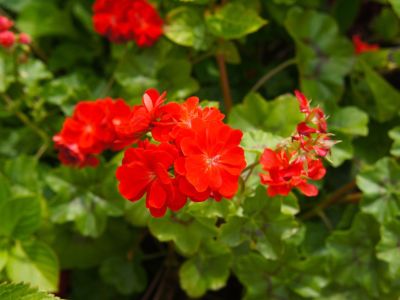Brocade Geranium Info
Brocade geranium plants (Pelargonium x hortorum) are zonal geraniums that are more commonly grown as accent plants for their colorful foliage rather than their brightly colored, classic geranium blooms. Like all geraniums, their flowers attract butterflies and hummingbirds, while the plant’s natural scent deters deer. The truly outstanding characteristic of brocade geranium plants is the unique variegation of their foliage. Below are several of the highly sought-after varieties of brocade geranium and their unique color combinations:
Indian Dunes – Chartreuse and copper variegated foliage with red blooms Catalina – Green and white variegated foliage with hot pink blooms Black Velvet Appleblossom – Black to dark purple foliage with light green margins and peach colored blooms Black Velvet Red – Black to dark purple foliage with light green margins and red orange blooms Crystal Palace – Chartreuse and green variegated foliage with red blooms Mrs. Pollock Tricolor – Red, gold, and green variegated foliage with red blooms Red Happy Thoughts – Green and cream-colored variegated foliage with reddish pink foliage Vancouver Centennial – Star shaped purple and green variegated foliage with pinkish red blooms Wilhelm Langguth – Light green foliage with dark green margins and red blooms
How to Grow Brocade Leaf Geraniums
Brocade geranium care is no different than the care of other zonal geraniums. They grow best in full sun to part shade, but too much shade can make them leggy. Brocade geranium plants prefer rich, well-draining soil. Improper drainage or too much moisture can cause root and stem rots. When planted in the ground, geraniums have low watering needs; however, in containers they will need regular watering. Brocade geranium plants should be fertilized in spring with a slow-release fertilizer. They should be deadheaded as flowers fade to increase blooms. Many gardeners cut zonal geranium plants back halfway in midsummer to shape and create fullness. Brocade geranium plants are hardy in zones 10 and 11, but they can be overwintered indoors.
